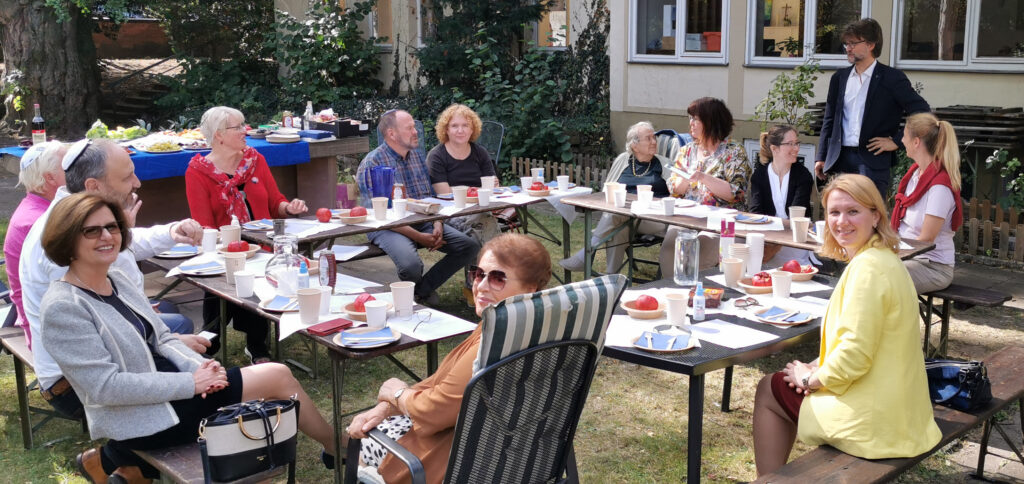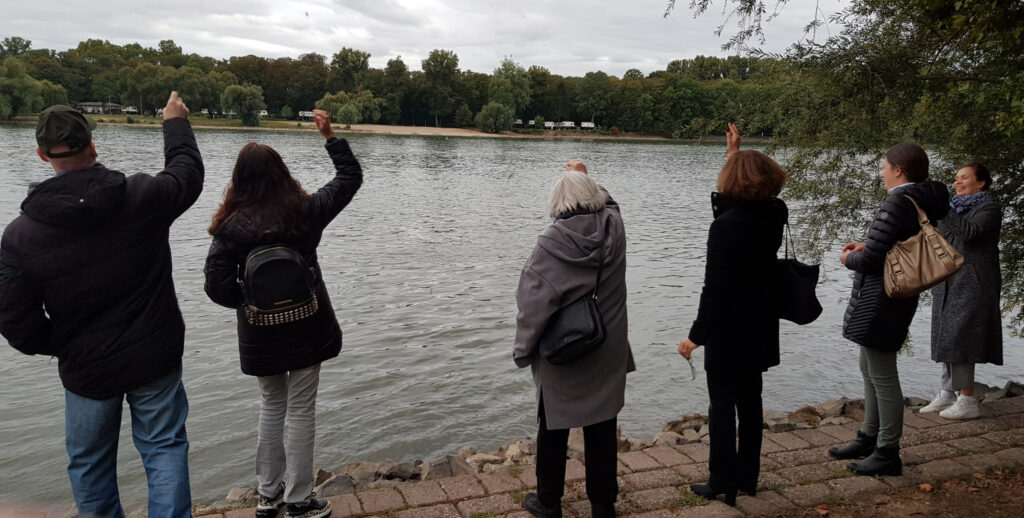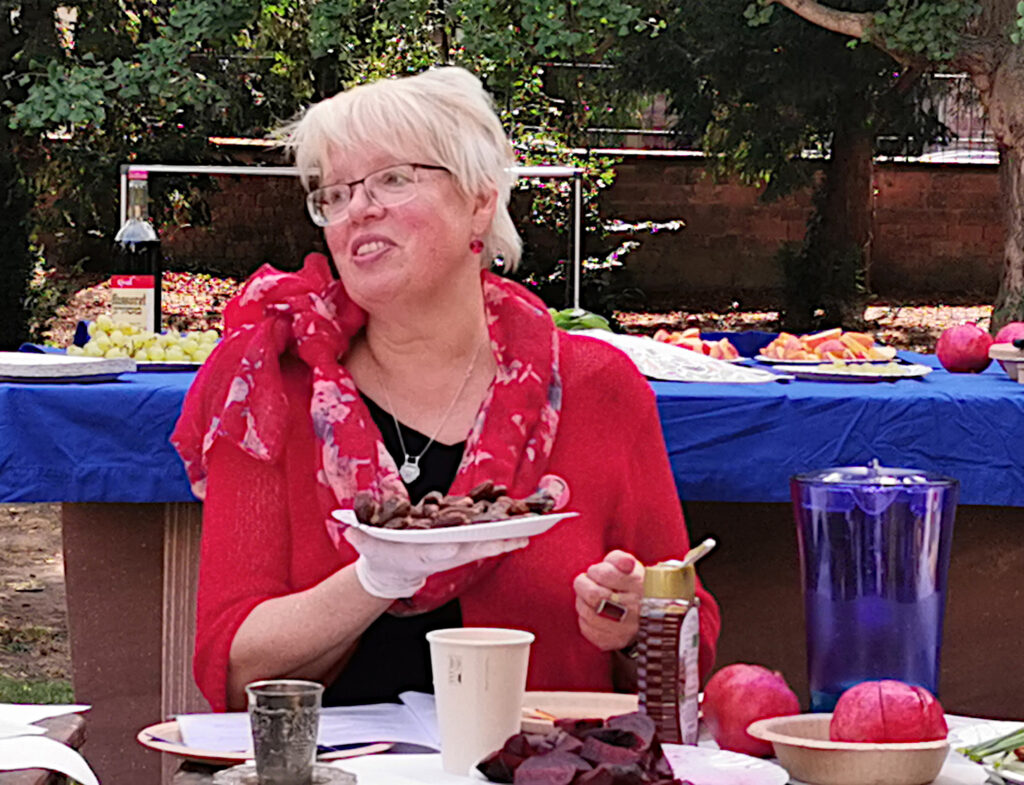Dear reader, if you have been visiting our site earlier already: This article in a past version also contained our Yom Kippur experience, which lead to some misunderstandings, so we now split it in two.
On the second day of the Rosh Hashanah holiday we had organised a “Seder” (a lunch with special, symbolic food) in a wonderful garden. A member of our congregation, Dr Birgit Klein explained the meanings of the different dishes and their origin. Again, we were very happy that Batja participated, after all it was her first Rosh Hashanah in a Jewish congregation in Germany since 82 years.

The 10 days between the Jewish New Year Rosh Hashanah and Yom Kippur, the highest of the Jewish holidays, are called the 10 Days of Repentance. During these days there is a common rite: Tashlikh (in Hebrew “throw”).

All the negatives are symbolically thrown into flowing water. This starts a spiritual renewal. According to Rabbi Leo Trepp this custom was developed in the Rheinland area (probably around Mainz) and then it was taken over by Jews around the world.

With our Tashlikh on the banks of the Rhine in Biebrich we wanted to remind ourselves and the City of Wiesbaden that Jewish life is existing in Germany since nearly 1700 years, having had an important impact on the development of Judaism around the world. Last not least, Germany is the cradle of Progressive Judaism.

Since the wonderful Reform Synagogue on the Michelsberg is no longer standing, we are constantly looking for a place to meet. Nonetheless, we want to welcome all those who are interested.

We would love to fill in citizens from Wiesbaden, classes as well as religious and other groups about Progressive Judaism, the main differences between the various Jewish movements, Jewish diversity and different possibilities to be Jewish today.
